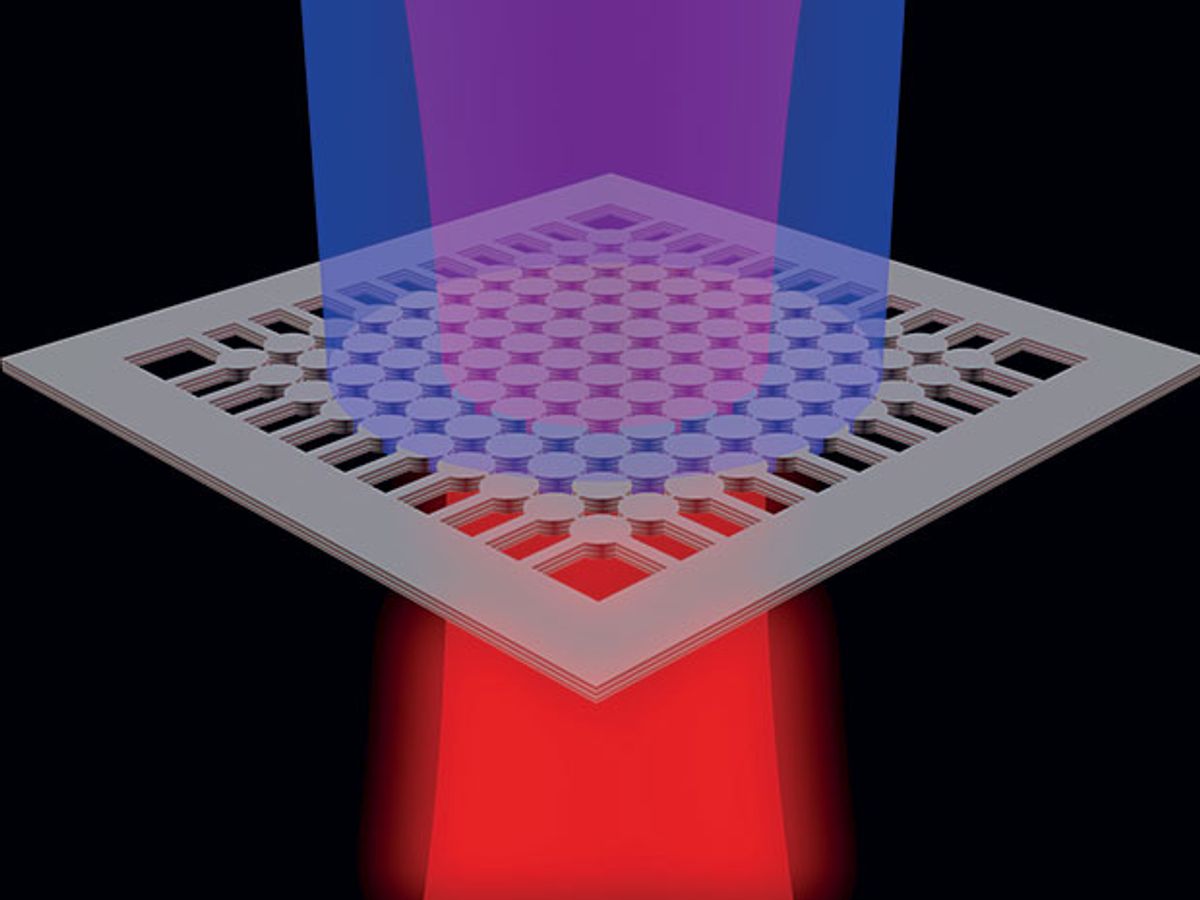Tapping into an idea from quantum mechanics that dates back to the Jazz Age, researchers have created a new type of laser that could be much tinier than conventional lasers, potentially leading to faster optical communications and more powerful computers.
The laser relies on a phenomenon known as bound states in the continuum (BICs), which allows researchers to build a laser cavity in open air. “It’s not every day that you have the possibility to make a new type of laser,” says Boubacar Kante, a professor of electrical and computer engineering at the University of California, San Diego, who with his colleagues described their laser in this week’s issue of Nature.
In most traditional lasers, the laser cavity consists of some material in which light waves oscillate back and forth between two mirrors, exciting electrons in the material and causing them to emit more photons. Eventually some of the light passes through one of the mirrors, which is not perfectly reflecting, producing the laser beam.
The BICs laser cavity, by contrast, is a type of photonic crystal, shaped to limit and control how light waves can propagate. The researchers built a membrane of a dielectric material, indium gallium arsenide phosphide. The membrane consists of small discs of the material, 300 nm thick and 528.4 nm in radius. The discs, which the researchers call “particles,” are where the lasing takes place, and they’re spaced 1200 nm apart, joined by tiny bridges of material to give the membrane structural stability. The team built arrays ranging in size from 8 x 8 to 20 x 20 particles. The periodic arrangement of the particles creates bandgaps, frequencies at which the light waves can’t exist. Those bandgaps act as insubstantial mirrors, confining the light between them. Slight flaws in the design make the mirrors imperfect, allow the laser to produce a light beam.
The upshot is that they can build a laser cavity with a much higher “quality factor,” a dimensionless parameter that describes how much energy a cavity can hold. That means they can achieve lasing with a much lower energy input, which in turn allows them to build smaller lasers than ever, or build higher power lasers that build up less heat.
The team calls their lasers BICSELs, by analogy to the long used vertical-cavity surface-emitting laser (VCSEL), and Kante says they can build a laser 100 times smaller than a VCSEL. That could mean packing them more densely on a chip without having to worry about heat dissipation, leading to higher-rate optical communications inside a computer. The lasers can also be designed to emit light at different angles, making them potentially useful as beam-steering optical antennas.
The team built its laser to work at 1550 nm, a popular telecommunications wavelength, but using different materials should allow them to build any other usual wavelength. The demonstration device was powered with light from another laser, but Kante has a three-year grant from the National Science Foundation to create an electrically powered device, which is generally required to make a laser worthwhile.
Neil Savage is a freelance science and technology writer based in Lowell, Mass., and a frequent contributor to IEEE Spectrum. His topics of interest include photonics, physics, computing, materials science, and semiconductors. His most recent article, “Tiny Satellites Could Distribute Quantum Keys,” describes an experiment in which cryptographic keys were distributed from satellites released from the International Space Station. He serves on the steering committee of New England Science Writers.



